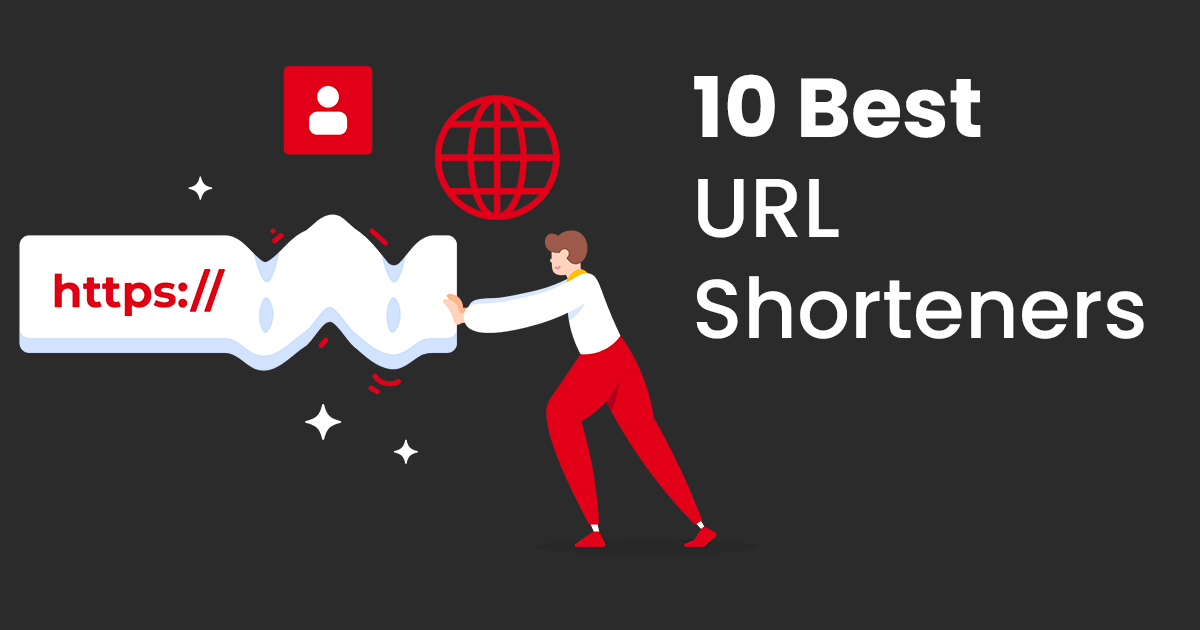Introduction
In today’s digital age, where sharing information and resources has become second nature, long and complex URLs can pose challenges. You’ve probably come across those bite-sized links that pack a punch – yes, we’re talking about URL shorteners! In this digital age, where character limits and tidy links matter, that’s where URL shorteners come into play.
In this blog, we will explore the concept of URL shorteners, how they work, their benefits, and their impact on the internet.
What is a URL Shortener?
A URL shortener is a tool that takes a long and unwieldy URL (Uniform Resource Locator) and converts it into a shorter, more concise version. The shortened URL redirects to the original, longer URL when accessed. It acts as a convenient alias or substitute for the original link, making it easier to share, remember, and manage.
Understanding the Anatomy of a URL
Ever stared at a web address longer than your weekend to-do list and wished for a shortcut? That’s where URL shorteners swoop in to save the day! Before we delve into the magic of link shortening, let’s break down the typical URL jumble.
- Protocol: The entry gate, indicating how the browser should access the resource (e.g., HTTP or HTTPS).
- Domain Name: The destination, identifying the specific web server.
- Path: The route or directory leading to the specific webpage.
How Do URL Shorteners Work?
URL shorteners use a simple process to generate shortened URLs. When a user inputs a long URL into the URL shortening service, the tool creates a unique, shortened link that redirects to the original destination.
This is achieved by storing the original URL in a database and associating it with a unique identifier. When the shortened URL is accessed, the server retrieves the original URL from the database and redirects the user to the intended destination.
URL shorteners operate on a relatively straightforward principle, yet they provide significant benefits for users. Let’s explore the step-by-step process of how URL shorteners work:
Step 1: Receiving the Long URL
The first step of the process involves receiving the long, original URL from the user. This URL is typically a web address that they wish to shorten for various reasons, such as sharing on social media, fitting within character limitations, or improving readability.
Step 2: Generating a Shortened URL
Once the long URL is received, the URL shortener generates a unique, shortened URL. This is accomplished by utilizing an algorithm or encoding mechanism that converts the lengthy URL into a concise, alphanumeric representation.
Step 3: Storing the Mapping
The shortened URL is associated with the original long URL to ensure proper redirection. This mapping is stored in a database or a similar data structure. The shortened URL becomes a key that points to the corresponding long URL, acting as a redirect mechanism.
Step 4: Redirecting to the Original URL
When a user clicks on the shortened URL or enters it into a browser, the URL shortener server receives the request. It then retrieves the mapping information from the database based on the shortened URL provided.
Step 5: Redirecting the User
Using the mapping information, the URL shortener server redirects the user to the original, long URL associated with the shortened URL. This redirection happens seamlessly and almost instantaneously, allowing the user to access the intended content or website.
Benefits of Using URL Shorteners
So, why bother with URL shorteners? First off, they’re the Marie Kondo of the internet, tidying up your links and making them look oh-so-neat. But it’s not just about aesthetics – these link-shortening marvels come armed with analytics superpowers.
1. Simplify Link Sharing
Long URLs can be challenging to share, especially on platforms with character limitations like social media or messaging apps. URL shorteners make sharing links more convenient and user-friendly.
2. Track and Analyze Link Performance
Many URL shorteners provide analytics and tracking capabilities. They allow users to monitor click-through rates, track geographic data, and gain insights into user behavior, providing valuable data for marketing campaigns and strategies.
3. Enhance Branding and Trust
URL shorteners often offer customization options, allowing users to create branded and personalized shortened URLs. This helps reinforce brand identity, increases brand recognition, and instills trust in the audience.
4. Save Space and Improve Aesthetics
Shortened URLs take up less space, making them ideal for platforms with limited character counts. They also improve the visual appeal of posts, emails, or any other medium where a shorter, more concise link is desired.
5. Enable Link Management and Editing
URL shorteners often come with link management features that allow users to edit, update, and organize their shortened links. This flexibility is useful for correcting errors, updating destination URLs, or categorizing links for easy reference.
Why You Need URL Shortening
URL shortening offers several benefits that make it a valuable tool for anyone who shares links online. Here are just a few reasons why you might want to use URL shortening:
- Save Space: Long links can take up a lot of space, especially on social media platforms like Twitter where character counts are limited. URL shortening allows you to share links without using up valuable space.
- Track Clicks: Many URL shortening services offer analytics that allow you to track how many clicks your links are getting. This can help measure the effectiveness of your marketing campaigns or for tracking how many people are clicking on links in your blog posts.
- Improve Memorability: Shorter links are easier to remember and type out than long, complex links. This can be especially helpful if you’re sharing a link with someone verbally or over the phone.
- Protect Your Brand: Some URL shortening services like Shortifyme allow you to customize the domain name in your shortened links. This can help you promote your brand and make your links look more professional.
URL shortening is a simple yet powerful tool that can help you share links more effectively online. Whether you’re sharing links on social media, in blog posts, or email campaigns, using a URL shortening service can make your links more memorable, trackable, and professional.
How to Shorten a URL
Ready to join the URL shortening party? Buckle up for a quick guide on creating and using shortened URLs. It’s a piece of cake, and with a sprinkle of best practices, you’ll be the link-shortening maestro in no time.
Select Your URL Shortening Service
Choose a reliable URL shortening service such as Shortifyme.
Copy and Paste
Copy the lengthy URL you want to shorten from your browser’s address bar.
Visit the URL Shortening Service
Go to the website of your chosen URL shortening service.
Paste and Shorten
Paste your long URL into the designated space on the URL shortening service’s website.
Copy the Shortened URL
Once generated, copy the shortened URL provided by the service.
Share Away
Your shortened link is now ready to be shared! Paste it into emails, social media posts, or any other platform where brevity is key.
Clicks and Analytics
If your URL shortening service offers analytics, explore the data to understand how your audience interacts with the link.
Embed in QR Codes
Some services allow you to create QR codes for your shortened URLs, offering an additional way to share links.
Best Practices
Consider customizing your shortened link if the service allows it, creating a branded and recognizable URL.
Be mindful of the character limit on certain platforms, especially on Twitter, where brevity is crucial.
Regularly Monitor and Manage
Keep track of the performance of your shortened links and consider managing them over time.
Some services may allow you to edit the destination URL or set expiration dates for added control.
Creating and using shortened URLs is a breeze, and with a few simple steps, you can make your links more shareable and efficient across various platforms. Happy shortening! ✨🔗
What are Some Popular URL Shorteners?
Luckily, you have a variety of URL shortener tools available to tidy up lengthy links. Here are some of the most widely used ones:
1. Shortifyme
Shortifyme
is one of the popular URL shorteners that helps in creating short links that are easy to share verbally, in print, or online. It comes with exciting features like custom domains, link management, link analysis, and API integration. Start shortening URLs in Shortifyme for FREE!
2. Bitly
Bitly is one of the most widely used URL shortening services, offering link tracking and analytics.
3. TinyURL
TinyURL is a straightforward URL shortener that allows users to create shorter versions of long URLs.
Final Words
URL shorteners play a vital role in simplifying and managing links on the internet. By generating shortened URLs, establishing redirections, and providing additional features, they offer convenience, enhanced analytics, and improved user experiences.
Understanding the inner workings of URL shorteners empowers users to leverage these tools effectively and optimize their online link management strategies. Embrace the power of URL shorteners and enjoy the benefits of streamlined and efficient link sharing in the digital realm.



